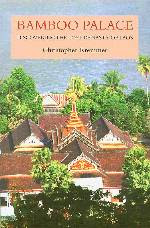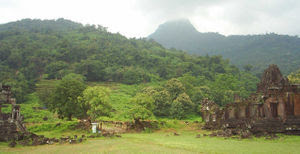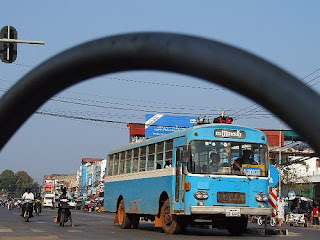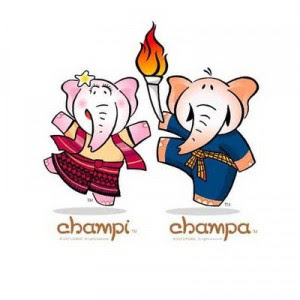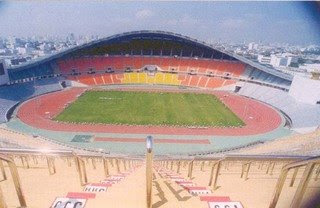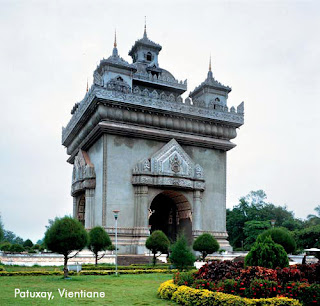
Getting Here
Laos can be reached by land, air and river from the neighboring countries of Thailand, Viet Nam, Cambodia and China. To enter the country, visitors need a passport with at least six months validity. There is regular air service to Laos on Thai International, Viet Nam Airlines, Lao Airlines, China Southern and Bangkok Airways. The busiest entry-exit point is the Friendship Bridge, which connects Vientiane to Nong Khai, Thailand. Another popular overland border crossing is Houeisai that links Northern Thailand’s Chiang Rai province to northwestern Laos at the center of the famed Golden Triangle.
Visas and Border Formalities
30-day visas are available from Lao Embassies and consulates abroad. Alternatively, 30-day visa on arrival may be obtained by passport holders at the following 11 international border crossings: Botene in Luang Namtha (Laos-China), Houeisai in Bokeo (Laos-Thailand), Na Meo in Houaphan (Laos-Viet Nam), Namkhan in Xieng Khouang (Laos-Viet Nam), Nam Phao in Bolikhamxai (Laos-Vietnam), Thakhaek in Khammouane (Laos-Thailand), Na Phao in Khammouane (Laos-Viet Nam), Dene Savan (Laos-Viet Nam) and Dan Savanh (Laos-Thailand) in Savannakhet and Vang Tao in Champassak (Laos-Thailand). If you have already have a visa you may enter Laos from Cambodia at Veun Kham. Visa extensions are possible and best handled by one of the many tour companies in Vientiane , Luang Prabang or Pakse.
With the enactment of the ASEAN Tourism Agreement, ASEAN nations are moving towards establishing a visa-free tourism zone for ASEAN nationals by the end of 2005. If you are a citizen of an ASEAN country, check with the Lao Embassy in your country whether or not you require a visa to enter Laos.
Climate
Laos generally enjoys a mild tropical climate, but it can get quite chilly in the cool season. Temperatures range from 10 ? 40 degrees Celsius in the Mekong Valley , and may dip below zero in the mountains and on the Xieng Khouang and Bolaven Plateaus. There are three distinct seasons: cool from November-February; hot from March-May and the rainy season which lasts from June -October. Most people find the best time to visit from October-February, however the low season offers lush green landscapes in the rainy season and the colorful Lao New Year’s festival in April.
Geography
Laos‘ main geographic features are low mountains, the Xieng Khouang and Bolavens plateau and the Mekong River valley. Of the country’s 237,000 square kilometers, about 70% of the country is mountainous, with the highest peak, Phou Bia reaching just over 2,800 meters.
Language
The national language is Lao as it is spoken in Vientiane , but English is commonly used in major tourist centers. Chinese, Vietnamese and Thai are widely understood. French, German, Russian and a number of other European languages are also spoken by many educated Lao as many students received university training in Eastern Europe during the 1970’s-1990’s. In addition, there are over 220 indigenous languages spoken by Laos’ 47 different ethnic groups, part of the country’s cultural heritage that makes it so interesting.
Money
The official currency of the Lao PDR is the Lao Kip. Major travelers checks can be cashed at banks. Credit cards are accepted in major hotels and a limited number of upscale shopping establishments. At present, it is not possible to withdraw currency from your account at home using an ATM in Laos.
Post and Internet Access
There are post offices in all provincial capitals where letters and parcels may be sent to your home country. At Vientiane ’s main post office there is a post restante service. Both DHL and FedEx have offices in Vientiane. Internet access is available in all major tourism centers and all but the most remote population centers.
Phone and Fax Services
International Direct Dial is widely available and you can send and receive faxes from all post offices and many private businesses. You can also purchase a local SIM card for your mobile phone.
Electricity
24-hour electricity is now available in all major population centers and many district capitals. Laos uses 220 volt AC.
Business Hours
Government offices are open from 8:30-12:00 and from 1pm to about 4:30 on Monday through Friday. Private businesses are generally open later, especially restaurants and entertainment places. Except for restaurants, most businesses are closed on Sunday.
Traveling with Children
Laos is a safe, quiet country with a lot to explore for both adults and children. Lao people love kids, and if you bring yours along the attention and curiosity they arouse will open up many opportunities for you to interact and make friends with your hosts.
Health
Laos has only basic health care and you should check with your physician regarding which vaccinations and health precautions you should get before coming. The World Health Organization recommends the following vaccinations for SE Asia ; diphtheria and tetanus, hepatitis A, hepatitis B, measles, mumps and rubella, polio and typhoid. If you are taking any special medications, be sure to bring along an adequate supply to last the length of your trip. Precautionary measures like eating only well cooked food, drinking bottled water, staying hydrated, avoiding being bitten by mosquitoes and wearing protective clothing will help prevent most common ailments.
